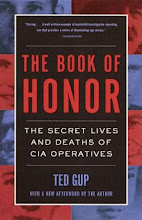
THE HUTAREES: EXPOSURE AND VULNERABILITY
By Fred Burton and Ben West
On March 29, an indictment accusing nine individuals of planning attacks against police officers was unsealed in the U.S. District Court for the Eastern District of Michigan. Those named in the indictment had been arrested by a joint anti-terrorism task force consisting of the FBI, the U.S. Bureau of Alcohol, Tobacco, Firearms and Explosives and state and local police. Raids took place from March 27 to 29, with most of the arrests occurring in the Lenawee/Washtenaw County area in southeastern Michigan, near the border with Ohio. Other arrests took place in Ohio and Indiana. Photos and video of the raids showed special operations police staging outside targeted properties with armored personnel carriers, assault rifles and helicopter support — unusually overwhelming measures, likely taken because of suspicion that the group was plotting to kill police officers.
The individuals referred to themselves as “Hutarees,” a name meaning “Christian Soldiers” according to the group’s Web site, although it is unclear what language the word might come from. The federal indictment indicated that the apparent leader of the group, David Brian Stone, was known to make up names for tactical operations and maneuvers, so it is likely he coined the name of the group as well. The meaning given the term reflects the group’s extremist Christian beliefs and its claims that it was preparing to defend itself and others in the name of Christianity. According to the Hutaree Web site:
Jesus wanted us to be ready to defend ourselves using the sword and stay alive using equipment . . . We, the Hutaree, are prepared to defend all those who belong to Christ and save those who aren’t. We will still spread the word, and fight to keep it, up to the time of the great coming.
All the task force raids transpired and ended peacefully, with one of the members, Joshua Matthew Stone, David’s son, holding out the longest. All nine individuals were charged Monday with seditious conspiracy; attempts to use weapons of mass destruction; teaching and demonstrating the use of explosive materials; and carrying a firearm for criminal violence. According to the indictment, the nine individuals trained in small-unit paramilitary tactics and acquired and trained with firearms, live ammunition, explosives, uniforms, communication equipment and medical supplies. It consisted of two units, one led by David Stone and the other led by his son Joshua, and the two units met and trained together roughly once a month. Another son, David Brian Stone Jr., served as the militia’s explosives instructor and demonstrator.
The most incriminating act the group committed was plotting to kill police officers by luring them into a trap. The group was planning to cause a police traffic stop or fake a 911 call and attack the responding officers, then follow up with more attacks during the official funerals that would follow. The indictment also accuses the elder David Brian Stone of instructing the group to kill anyone who happened upon and did not acquiesce to the group during an exercise set to take place in April 2010. This overt and imminent threat likely precipitated the raid that led to the arrests in late March. The group allegedly intended to trigger a larger uprising against the U.S. government in response to Hutaree activities, a charge that carries connotations of terrorism.
A Lack of Operational Security
Federal charges against the Hutarees relate to events as far back as August 2008, approximately when the group began plotting against the federal government, according to the indictment. It is unclear exactly how federal investigators collected information on the group, although it is not too difficult to imagine, given the group’s relatively high profile. For one thing, it maintained a Web site with photos of members, scheduled meeting times and forums where members and visitors could post comments and communicate with each other. This made it very easy for anyone to find the group and initiate contact with it, which in turn made it an easy target for enforcement.
The group displayed on its Web site and in a YouTube video footage of members training in small-unit tactics, images that never depicted more than six or seven people at a time. A group photo on their Web site shows 17 people, presumably the entire Hutaree membership, a relatively small group for a militia. The videos show them patrolling through woodlands and conducting small-arms firing exercises from behind vehicles. One video shows a mock-up of an improvised explosive device being detonated by a man crossing a tripwire and “killing” him, a demonstration that substantiates the accusation in the indictment that the group was attempting to acquire explosive materials and construct improvised explosive devices. In that same video, members of the group are seen setting fire to the UN flag and raising a flag bearing their own Hutaree insignia: an “H” overlaying a cross with two crossed spears at the bottom. However, the weapons displayed by the group varied: Some members brandished semi-automatic assault rifles while others held bolt-action hunting rifles. The lack of weapon standardization indicates that the group was still operating at a low level of organization.
The group was also thought to have had connections with other militias in the region. The federal indictment specifically mentions a meeting with several other groups that Hutarees planned to attend Feb. 6 in Kentucky. The meeting was meant to “facilitate better communications, cooperation, and coordination between the various militias.” Such contact with other militias is probably what emboldened the Hutarees to expect a coordinated uprising from these groups when the Hutarees started their offensive against the U.S. government. Although representatives of the group were ultimately unable to attend the February meeting, their intention to go indicates that they communicated with other groups in the region, and this would have increased the number of people who knew about them and could report on their activities. (In fact, the special agent in charge of the FBI’s Detroit field office, Andrew Arena, confirmed that an outside militia member had gone to the FBI after interacting with the Hutaree group.) It also means that the group likely engaged in e-mail and/or telephone contact with outsiders, which would allow law enforcement authorities to keep tabs on the group’s thoughts and plans.
Finally, one of the arrested individuals, Kristopher Sickles, had been a guest numerous times on nationally syndicated radio shows, once in August 2009 under the pseudonym “Pale Horse.” Publicly, Sickles associated himself with the Ohio militia, a fact that, when combined with details from the indictment, indicates that the group was not necessarily exclusive and that members of the Hutarees also trained with other groups in the region. The fact that the Hutarees trained together only once a month gave members ample opportunity to be involved in other militia activities. The fact that Hutaree members associated with other groups is not surprising; it would have helped them expand the movement and improve communications. But it would also have undermined the authority of any one group and prevented a clear hierarchy from forming, since the foot soldiers would not have answered to any one commander. This sort of dynamic dilutes any one group’s potency and leaves it more vulnerable to detection.
In his radio talk-show interviews, Sickles claimed he and his compatriots were “practicing their constitutional rights” by collecting firearms and ammunition and encouraging others to do so as well, emphasizing the need to “be prepared.” When asked what he was preparing for, Sickles named the economic crisis and the threat of U.S. involvement in more foreign wars while alluding to certain unanticipated and unnamed threats. He did not advocate the radical Christian ideology that was put forward by other members of the Hutarees and certainly did not publicly advocate attacking law enforcement officers.
The Risk of Going Public
Maintaining such a public profile greatly reduces the ability of any group to carry out surprise attacks on police officers and opens the group to infiltration. Sure enough, the federal indictment alludes to at least one case in which David Brian Stone sent diagrams and information on explosive devices over the Internet to “a person he believed capable of manufacturing the devices,” wording that indicates that either the FBI was using a source or an undercover agent had convinced Stone that he was an explosives expert who could help them. Such a source would be able to keep tabs on the group and draw them out. This tactic is extremely common in domestic counterterrorism cases involving Islamist militants and shows how the terrorist attack cycle is vulnerable, no matter who the actors are. Other cases, such as the Newburgh, N.Y., plot, involved law enforcement penetration into the suspected group and promises to deliver explosive material.
Successful domestic terror attacks require a high degree of isolation on the part of the operatives. The more people brought in to assist with the operation and become familiar with the group’s intentions, the higher the group’s risk of discovery. Unlike successful domestic terrorists before them, like Timothy McVeigh and Theodore Kaczynski, the Hutarees failed spectacularly at maintaining isolation, and this allowed authorities to penetrate their circle and maintain surveillance, thus mitigating any threat they posed.
The targets that the Hutarees had identified were police officers, who themselves are vulnerable targets (as seen in the fatal shootings in Seattle in November 2009), and considering the tactics the Hutarees devised to lure officers in and the arsenal they possessed, they certainly posed a risk. However, the degree of publicity that the Hutarees generated indicates that they were not practicing good tradecraft when it came to operational security — making the group an easy target for federal law enforcement agencies. This is an Achilles’ heel for many militant and criminal conspiratorial plots, especially plots originating inside the United States, where federal, state and local agencies are able to monitor a group’s e-mail, voice communications and activities.
 This is FREE intelligence for distribution from STRATFOR.Forward this to your colleagues.
This is FREE intelligence for distribution from STRATFOR.Forward this to your colleagues.This report is republished with permission of STRATFOR

.













































They are/were morons, but I don't think it's illega, YET to train with "uniforms, communication equipment and medical supplies". Probably be a new law soon. Wonder if it'll soon be illegal to keep my first responder kit and a fire extinguisher next to the AR in my car trunks and truck...
ReplyDeleteWhat about the Islamic compounds all over the US?
ReplyDelete